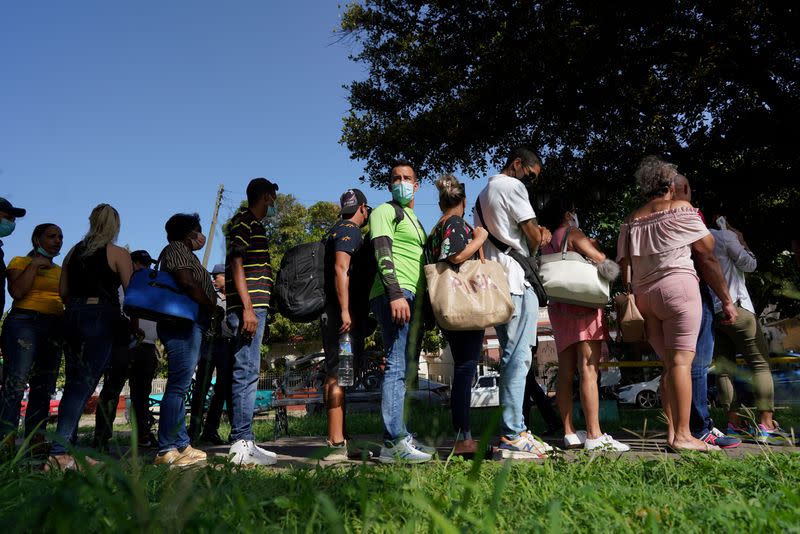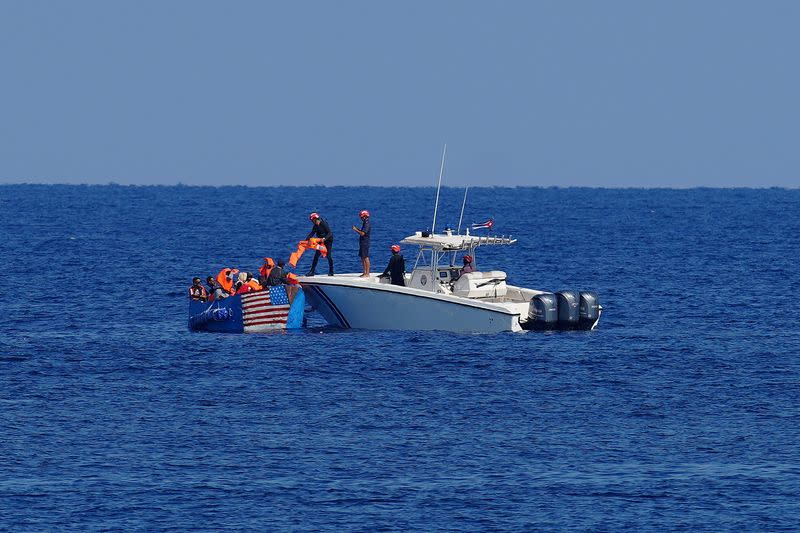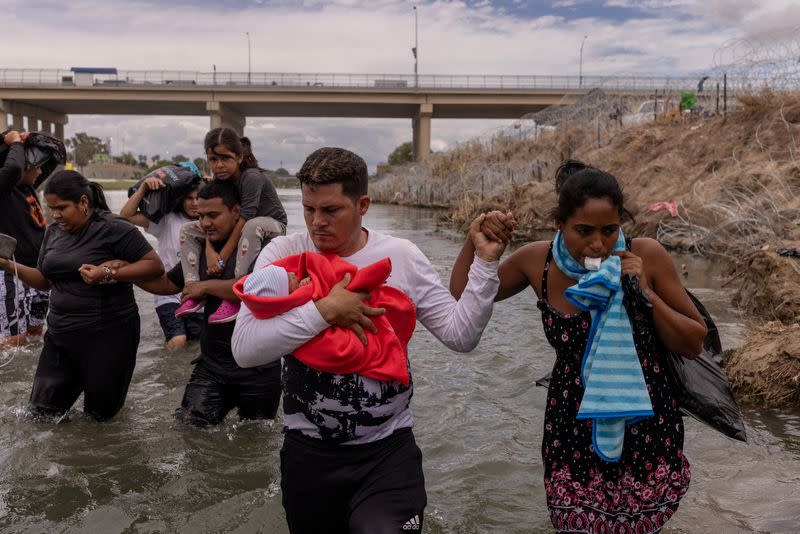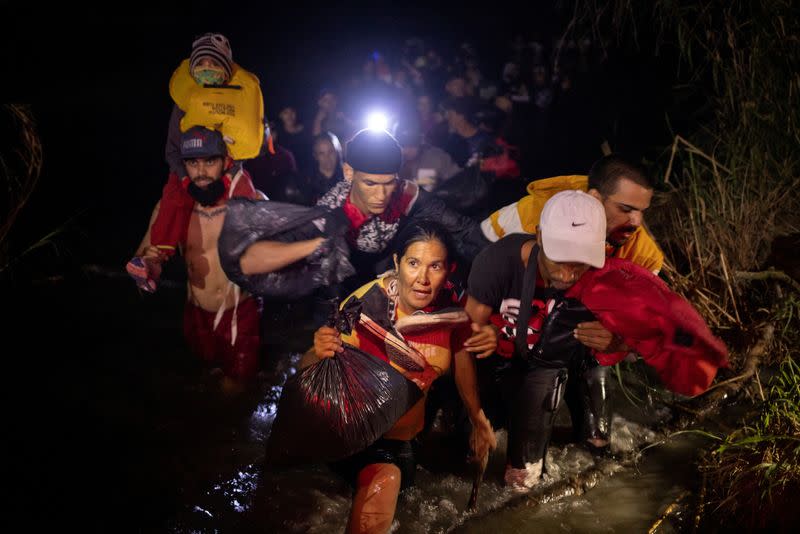As crisis deepens, Cubans scramble to migrate by any means
By Dave Sherwood
HAVANA (Reuters) - Cuban Idalberto Echavarria maneuvered his wife Olga in a wheelchair to the front of the line at Terminal 2 of Havana's airport, dodging luggage and a sea of people bidding farewell to friends and family.
The crowded terminal, a launch point for Cubans making their way by air to Nicaragua then overland to the United States, is one barometer of the frenzy to migrate from the communist-run island nation.
For many, like Echavarria and his wife, it has also become a last resort as Cuba's economic crisis deepens with no end in sight.
"There are other ways, but you need money or a family member outside the country," Echavarria told Reuters in an interview at the airport, referring to a refugee program introduced by the administration of U.S. President Joe Biden in January that requires a U.S.-based sponsor.
He and his wife, who is unable to walk due to a leg infection, have no retirement funds, no well-placed relatives in foreign countries and little access to legal entry programs, he said.
"For us, this was the only option, and the most difficult," said Echavarria. The couple plan to make the approximate 1,500-mile (2,400-km) trek through Central America by car.
The United States - the top destination for Cuban migrants -has since 2022 increased legal pathways to migration for Cubans, including visa access in Havana, in an effort to reduce illegal migration.
But more than a dozen interviews with would-be migrants this week at Havana embassies, municipal notaries and the airport suggest many, like Echavarria, either lack the means to apply for visa programs available on-island to Cubans or have lost patience waiting for their turn.
Despite the long onward journey, Nicaragua since 2021 has required no visa of Cuban migrants, and thus remains the easiest route to get to the U.S., several of those interviewed told Reuters.
While Key West in Florida lies little more than 90 miles from Cuba by water, the route is seen as risky and, unlike travel via Mexico, does not offer legal pathways for entry.
Echavarria said he did not want to cross the border illegally and would make an appointment for an asylum application via a U.S. government app, CBP One, which migrants can access from Mexico.
Others told Reuters desperation was such that any route would do, even if it meant attempting to cross the U.S. border illegally.
Just a few minutes from the airport, self-employed taxi driver Alain Ferguson, 27, said he had been left without friends by this most recent exodus.
"Go to the airport... almost everyone is leaving through Nicaragua," Ferguson said. "They don't care how they go, they just want to get out."
Nicaraguan officials did not immediately respond to a request for statistics on the number of Cubans entering the country by air.
But last month, Cuba's foreign ministry said it had detected "noticeable growth" in the movement of its migrants across irregular routes north through Central America in past months, though it did not release statistics.
About 10,700 Cubans were encountered at the U.S.-Mexico border in September, up from around 6,200 a month earlier, according to U.S. government statistics. Levels of border arrivals, however, are still lower than a year ago, when fewer legal avenues existed to apply from abroad.
'I GOT LUCKY'
Artist Ernesto Perez, 51, told Reuters he had waited since 2015 for his turn to enter the United states legally under a family reunification program. When that didn't work, he applied for the sponsorship program.
"Not having a response since 2015, one gets desperate," Perez said outside the U.S. embassy in Havana as he stood in line for his long-awaited interview. "It crossed my mind to go through Nicaragua ... but I decided to wait a little more and I got lucky."
Cuba blames the long-running U.S. trade embargo and Trump-era sanctions for fueling the economic crisis and the exodus of more than 400,000 Cubans leaving for the United States in the last two years.
The U.S. says the sanctions are necessary to promote human rights and fundamental liberties in Cuba and that it makes exceptions for humanitarian purposes.
Senior U.S. Department of State official Brian Nichols said on social media this week he was "concerned by reports of a dramatic increase in Nicaragua-bound charter flights that facilitate irregular migration from Cuba and elsewhere to the United States."
The U.S. said there would be consequences for those involved but did not specify what those would be.
For many Cubans, however, Nicaragua remains the only viable option for getting off the island, said Yoany Bilbao, a 28-year old auto mechanic.
"Anyone who (can apply for the sponsorship program) waits for it. But if they can't, they go through Nicaragua," he said.
(Reporting by Dave Sherwood in Havana, additional reporting by Ted Hesson in Washington, Ismael Lopez in San Jose and Alien Fernandez, Mario Fuentes and Nelson Acosta in Havana; editing by Mica Rosenberg and Rosalba O'Brien)




